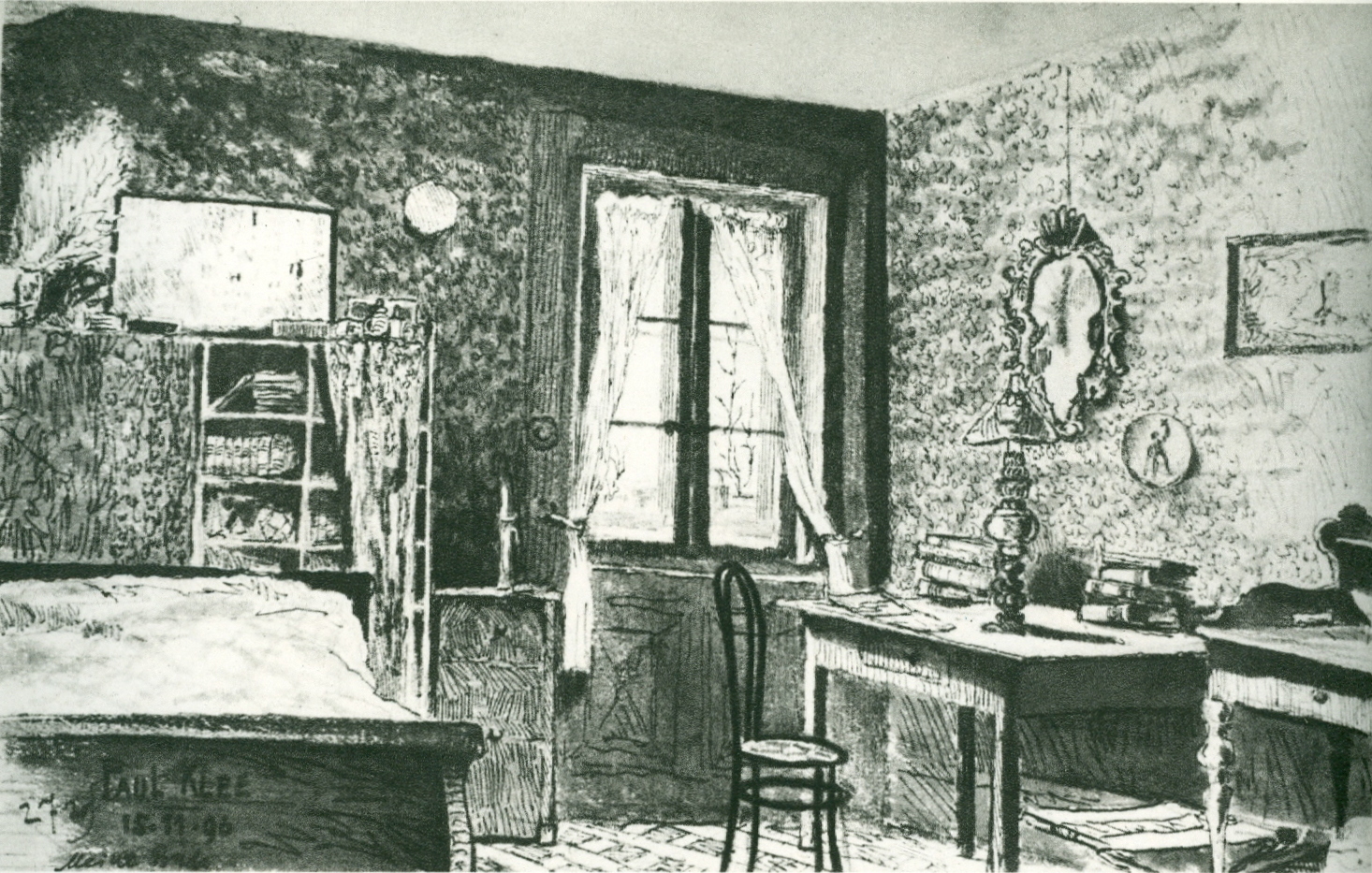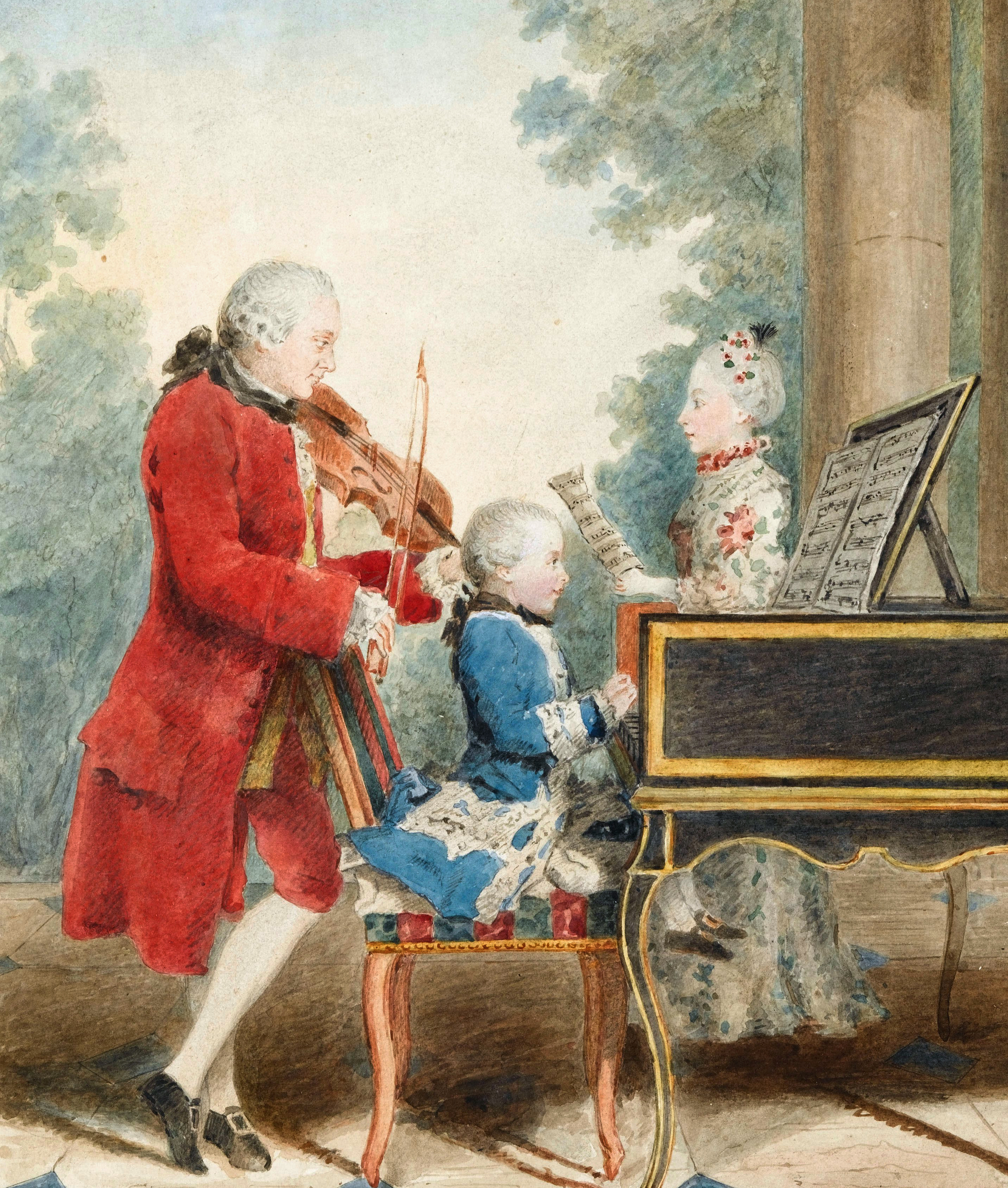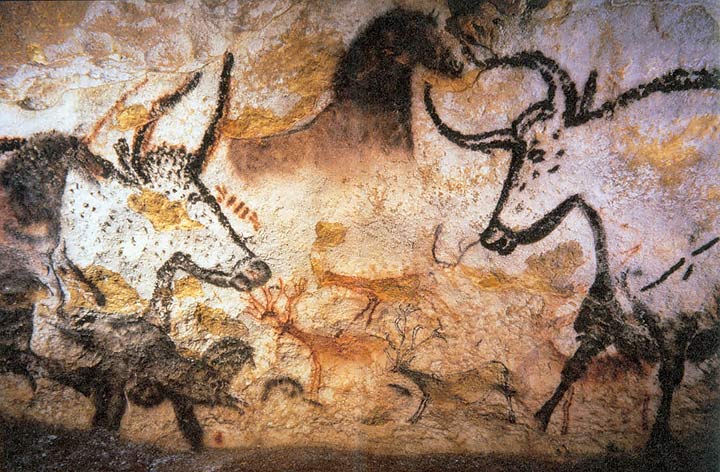|
Paul Klee
Paul Klee (; 18 December 1879 – 29 June 1940) was a Swiss-born German artist. His highly individual style was influenced by movements in art that included expressionism, cubism, and surrealism. Klee was a natural draftsman who experimented with and eventually deeply explored color theory, writing about it extensively; his lectures ''Writings on Form and Design Theory'' (''Schriften zur Form und Gestaltungslehre''), published in English as the ''Paul Klee Notebooks'', are held to be as important for modern art as Leonardo da Vinci's ''A Treatise on Painting'' was for the Renaissance. He and his colleague, Russian painter Wassily Kandinsky, both taught at the Bauhaus school of art, design and architecture in Germany. His works reflect his dry humor and his sometimes childlike perspective, his personal moods and beliefs, and his musicality. Early life and training Paul Klee was born in Münchenbuchsee, Switzerland, as the second child of German music teacher Hans Wilhelm Klee ... [...More Info...] [...Related Items...] OR: [Wikipedia] [Google] [Baidu] |
Münchenbuchsee
Münchenbuchsee is a Municipalities of Switzerland, municipality in the Bern-Mittelland (administrative district), Bern-Mittelland administrative district in the Cantons of Switzerland, canton of Bern (canton), Bern in Switzerland. It is famous as the birthplace of the painter Paul Klee. On 1 January 2023 the former municipality of Diemerswil merged to form the municipality of Münchenbuchsee. History Münchenbuchsee is first mentioned in a deed of donation in 1180 as ''Buhse'' (in Swiss German it is still known as ''Buchsi''). The oldest traces of settlements in the area are scattered neolithic and Hallstatt culture, Hallstatt artifacts which were found in the marsh near Moossee Lake. Some Bronze Age items were discovered in Hofwil. Other archeological discoveries include Iron Age and High Middle Ages, High Medieval earthen fortifications at Schwandenberg, a Tumuli, grave mound and an Early Middle Ages, Early Medieval grave in Hofwilwald. The knight Kuno von Buchsee donate ... [...More Info...] [...Related Items...] OR: [Wikipedia] [Google] [Baidu] |
Renaissance
The Renaissance ( , ) is a Periodization, period of history and a European cultural movement covering the 15th and 16th centuries. It marked the transition from the Middle Ages to modernity and was characterized by an effort to revive and surpass the ideas and achievements of classical antiquity. Associated with great social change in most fields and disciplines, including Renaissance art, art, Renaissance architecture, architecture, politics, Renaissance literature, literature, Renaissance exploration, exploration and Science in the Renaissance, science, the Renaissance was first centered in the Republic of Florence, then spread to the Italian Renaissance, rest of Italy and later throughout Europe. The term ''rinascita'' ("rebirth") first appeared in ''Lives of the Artists'' () by Giorgio Vasari, while the corresponding French word was adopted into English as the term for this period during the 1830s. The Renaissance's intellectual basis was founded in its version of Renaiss ... [...More Info...] [...Related Items...] OR: [Wikipedia] [Google] [Baidu] |
Romantic Music
Romantic music is a stylistic movement in Western Classical music associated with the period of the 19th century commonly referred to as the Romantic era (or Romantic period). It is closely related to the broader concept of Romanticism—the intellectual, artistic, and literary movement that became prominent in Western culture from about 1798 until 1837. Romantic composers sought to create music that was individualistic, emotional, dramatic, and often programmatic; reflecting broader trends within the movements of Romantic literature, poetry, art, and philosophy. Romantic music was often ostensibly inspired by (or else sought to evoke) non-musical stimuli, such as nature, literature, poetry, super-natural elements, or the fine arts. It included features such as increased chromaticism and moved away from traditional forms. Background The Romantic movement was an artistic, literary, and intellectual movement that originated in the second half of the 18th century in Europe a ... [...More Info...] [...Related Items...] OR: [Wikipedia] [Google] [Baidu] |
Classical Period (music)
The Classical period was an era of classical music between roughly 1750 and 1820. The classical period falls between the Baroque music, Baroque and Romantic music, Romantic periods. It is mainly Homophony, homophonic, using a clear melody line over a subordinate chordal accompaniment,Friedrich Blume, Blume, Friedrich. ''Classic and Romantic Music: A Comprehensive Survey''. New York: W. W. Norton, 1970 but counterpoint was by no means forgotten, especially in liturgical vocal music and, later in the period, secular instrumental music. It also makes use of ''Galant music, style galant'' which emphasizes light elegance in place of the Baroque's dignified seriousness and impressive grandeur. Variety and contrast within a piece became more pronounced than before, and the orchestra increased in size, range, and power. The harpsichord declined as the main keyboard instrument and superseded by the piano (or fortepiano). Unlike the harpsichord, which plucks strings with quills, pianos s ... [...More Info...] [...Related Items...] OR: [Wikipedia] [Google] [Baidu] |
Visual Arts
The visual arts are art forms such as painting, drawing, printmaking, sculpture, ceramics (art), ceramics, photography, video, image, filmmaking, design, crafts, and architecture. Many artistic disciplines such as performing arts, conceptual art, and textile arts, also involve aspects of the visual arts, as well as arts of other types. Within the visual arts, the applied arts, such as industrial design, graphic design, fashion design, interior design, and decorative art are also included. Current usage of the term "visual arts" includes fine art as well as applied art, applied or decorative arts and crafts, but this was not always the case. Before the Arts and Crafts Movement in Britain and elsewhere at the turn of the 20th century, the term 'artist' had for some centuries often been restricted to a person working in the fine arts (such as painting, sculpture, or printmaking) and not the decorative arts, crafts, or applied visual arts media. The distinction was emphasized by ar ... [...More Info...] [...Related Items...] OR: [Wikipedia] [Google] [Baidu] |
Paul Klee My Room 1896
Paul may refer to: People * Paul (given name), a given name, including a list of people * Paul (surname), a list of people * Paul the Apostle, an apostle who wrote many of the books of the New Testament * Ray Hildebrand, half of the singing duo Paul & Paula * Paul Stookey, one-third of the folk music trio Peter, Paul and Mary * Billy Paul, stage name of American soul singer Paul Williams (1934–2016) * Vinnie Paul, drummer for American Metal band Pantera * Paul Avril, pseudonym of Édouard-Henri Avril (1849–1928), French painter and commercial artist * Paul, pen name under which Walter Scott wrote ''Paul's letters to his Kinsfolk'' in 1816 * Jean Paul, pen name of Johann Paul Friedrich Richter (1763–1825), German Romantic writer Places * Paul, Cornwall, a village in the civil parish of Penzance, United Kingdom *Paul (civil parish), Cornwall, United Kingdom * Paul, Alabama, United States, an unincorporated community *Paul, Idaho, United States, a city *Paul, Nebraska, United ... [...More Info...] [...Related Items...] OR: [Wikipedia] [Google] [Baidu] |
Hofwil
Hofwil is a village in the canton of Bern, Switzerland, part of the municipality of Münchenbuchsee. The village of Hofwil was originally part of the lands owned by the Münchenbuchsee Commandery, a medieval commandery of the Knights Hospitaller in nearby Münchenbuchsee. After the commandery was suppressed during the Protestant Reformation, Hofwil was owned by a number of nobles. In 1719 Hieronymus von Erlach combined the village with Moosseedorf. Hofwil Castle was built in 1784-86 by the architect Carl Ahasver von Sinner for Gabriel Albrecht von Erlach. A peristyle was added to the neo-classical building in 1798. The Hofwil Institution was built by Philipp Emanuel von Fellenberg, a Bernese patrician. He took over the estate of Hofwyl in 1799 from his father and transformed it into several schools to educate all levels of society. He established a school for the poor, a secondary school for local students and an institute for the sons of wealthy families throughout Europ ... [...More Info...] [...Related Items...] OR: [Wikipedia] [Google] [Baidu] |
State University Of Music And Performing Arts Stuttgart
The State University of Music and Performing Arts Stuttgart is a professional school for musicians and performing artists in Stuttgart, Germany. Founded in 1857, it is one of the oldest schools of its kind in Germany. It is one of the oldest and largest universities of its kind in the country and offers programs in music, performing arts, and related disciplines. The university is structured into four faculties and eleven institutes, covering areas such as composition, music education, instrumental and vocal studies, conducting, acting, and puppetry. Its main building, located on the Stuttgart Kulturmeile, was completed in 2002. As of 2023, the university enrolled approximately 800 students and employed over 500 academic and administrative staff. Admission is based on an entrance examination. History The school was founded in 1857 as "Stuttgarter Musikschule" (Stuttgart music school) by Sigmund Lebert, Immanuel Faisst, Wilhelm Speidel and Ludwig Stark. It was named a conservat ... [...More Info...] [...Related Items...] OR: [Wikipedia] [Google] [Baidu] |
Tann, Hesse
Tann () is a town in the district of Fulda, in Hesse, Germany. It is situated in the Rhön Mountains, 27 km northeast of Fulda. It is an accredited Spa town at the Ulster River. Mayors * Karl Hilgen (SPD) till 1983 * Wolfgang Schwake (CDU) till 1989 * Dieter Herchenhan] (SPD) till 2001 * Markus Meysner (CDU) till 2013 * Mario Dänner (independent) since 2013 Buildings Image:Stadttor tann.jpg, City gate of Tann (built 1557–1563) File:Tann (Rhön), Ev. Stadtpfarrkirche-20160505-001.jpg, Protestant church File:Tann schlosshinten gelb.jpg, Tann yellow castle File:Tann blau schloss.jpg, Tann blue castle Sons and daughters of the town * Johann Ludwig Klüber (1762-1837), state lawyer and writer Personalities who have worked on the spot * Johann Michael Bach (musician at Wuppertal) (1745-1820), a member of the musical Bach family. Worked in Tann as a church musician (1786 to ca. 1795) * Sebastian Kehl (born 1980, Fulda), grew up in the district Lahrbach, professional fo ... [...More Info...] [...Related Items...] OR: [Wikipedia] [Google] [Baidu] |
Walzenhausen
Walzenhausen is a municipality in the canton of Appenzell Ausserrhoden in Switzerland. History The farm ''Walzenhausen'' was mentioned first in 1320. The church was built in 1638 in as little as nine months. This was the establishment of Walzenhausen as a municipality. In the past textiles played an important role, but today tourism has taken this role. This is facilitated by good public transport links. Geography Walzenhausen has an area, , of . Of this area, 52.4% is used for agricultural purposes, while 34.4% is forested. The rest of the land, (13.1%) is settled. Walzenhausen is the easternmost village in the canton Appenzell Ausserrhoden. It lies at and offers a panorama of Lake Constance below. Grimmenstein monastery is a small exclave of the canton of Appenzell Innerrhoden within the municipality. During the Protestant Reformation Walzenhausen adopted the new faith, while the monastery remained catholic. After centuries of debate and conflict over the monastery land ... [...More Info...] [...Related Items...] OR: [Wikipedia] [Google] [Baidu] |
Plastic Arts
Plastic arts are art forms which involve physical manipulation of a ''plastic medium'', such as clay, wax, paint or even plastic in the modern sense of the word (a ductile polymer) to create works of art. The term is used more generally to refer to the visual arts (such as painting, sculpture, ceramics, architecture, film and photography), rather than literature and music. Materials for use in the plastic arts, in the narrower definition, include those that can be carved or shaped, such as stone or wood, concrete, glass, or metal. History The word ''plastic'' draws from the Ancient Greek (''plastikós''), which means 'to mold' or 'to shape'. It has long preceded its dominant modern meaning as a synthetic material. The term ''plastic arts'' has been used historically to denote visual art forms (painting, sculpture, and ceramics) as opposed to literature or music. The related terms ''plasticity'' and ''plasticism'' became more widely used in the early 20th century by cri ... [...More Info...] [...Related Items...] OR: [Wikipedia] [Google] [Baidu] |




